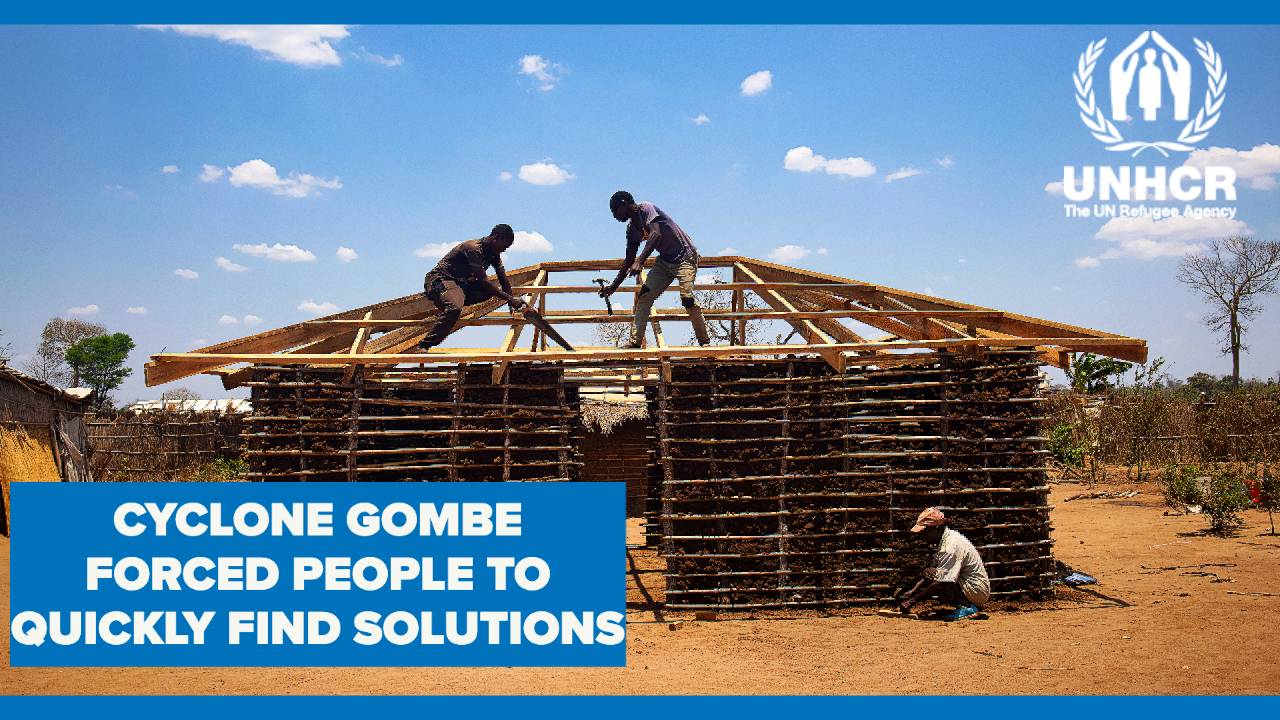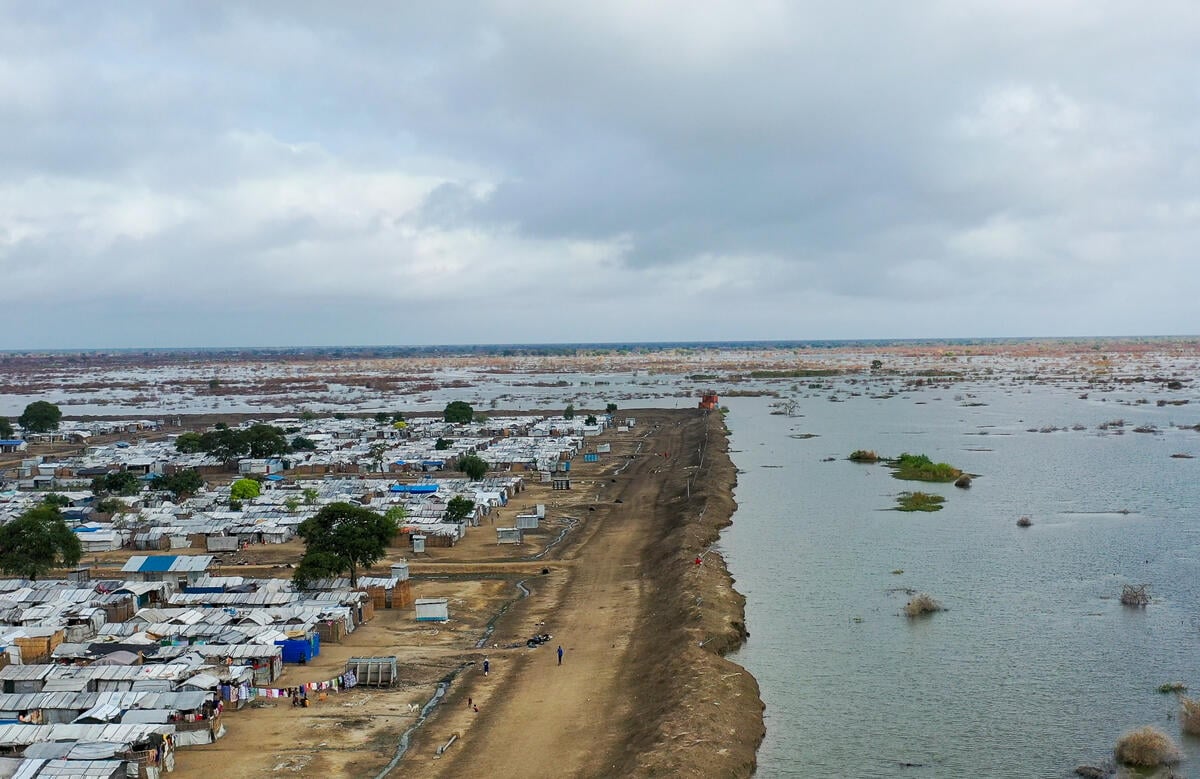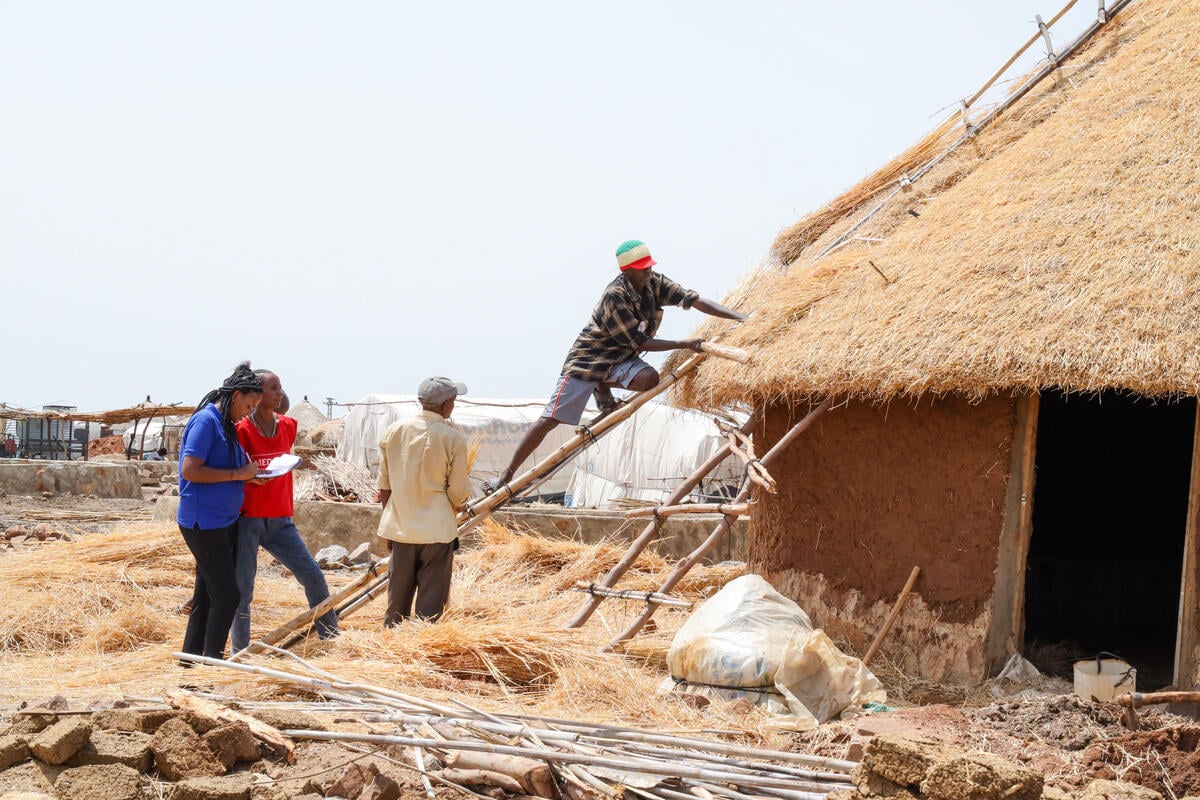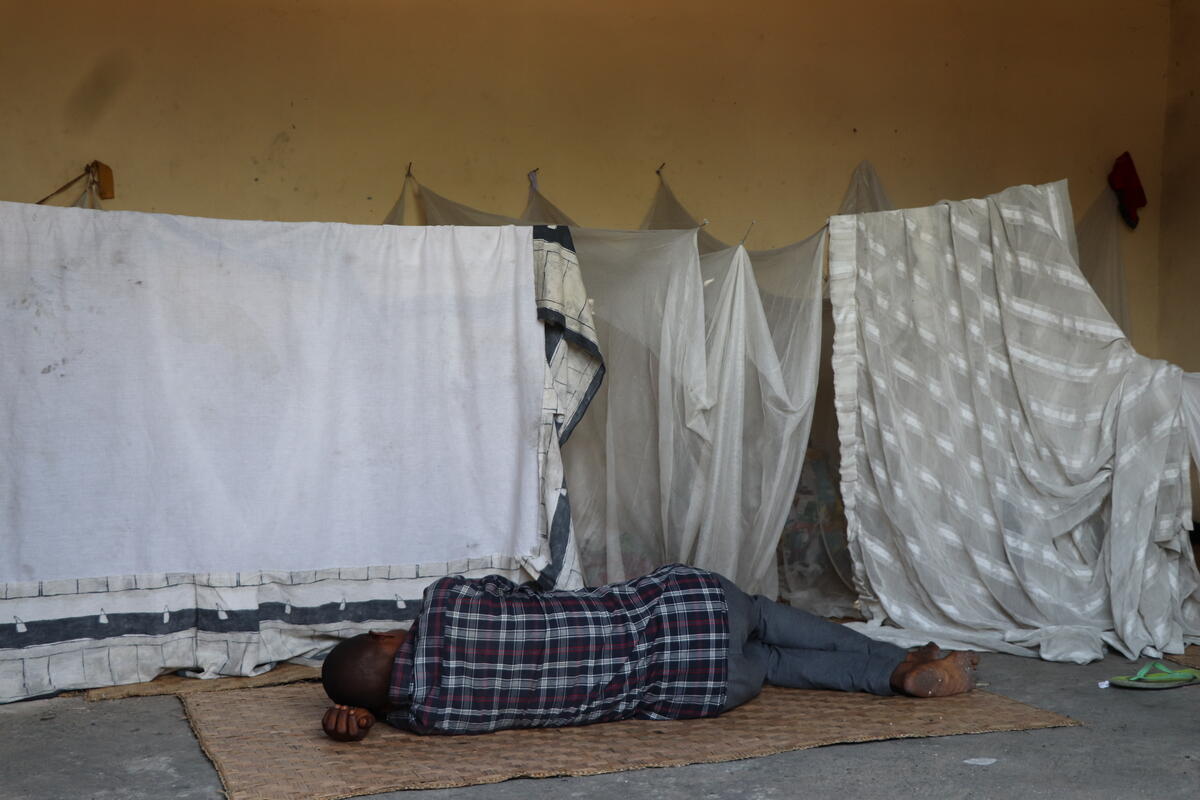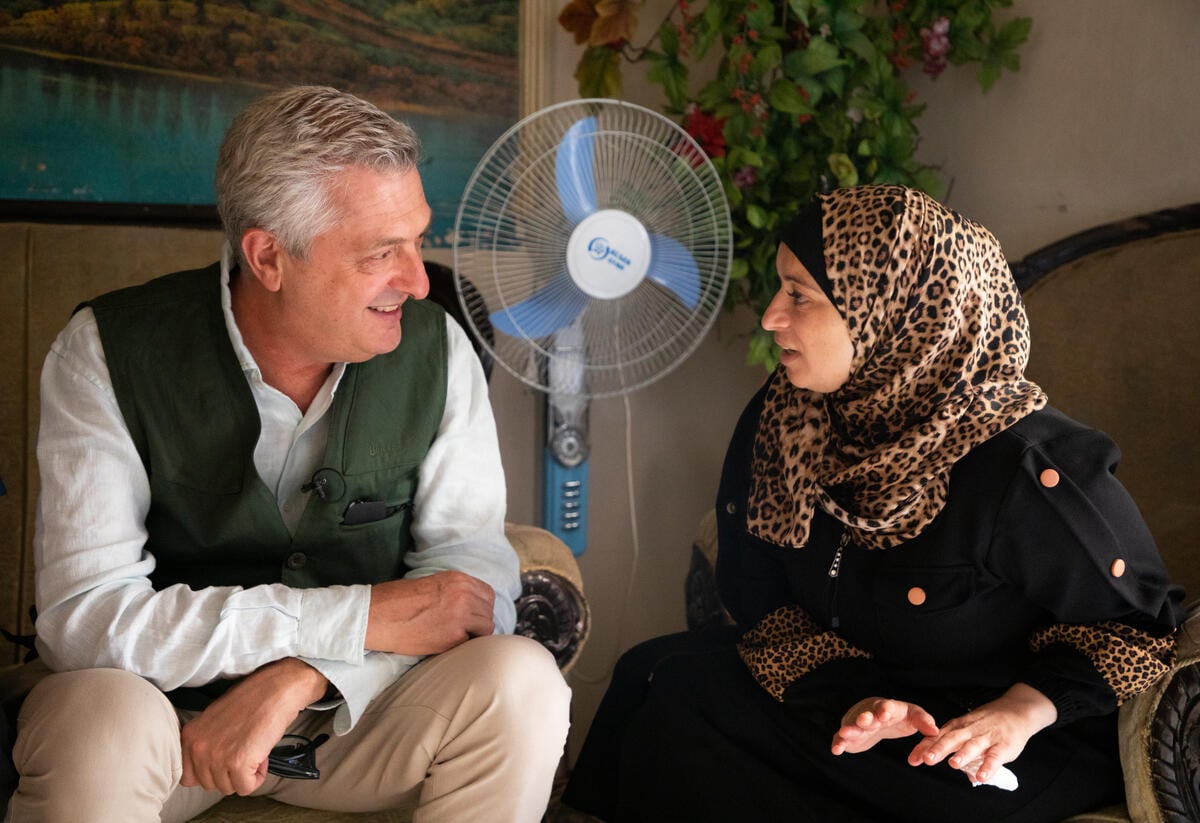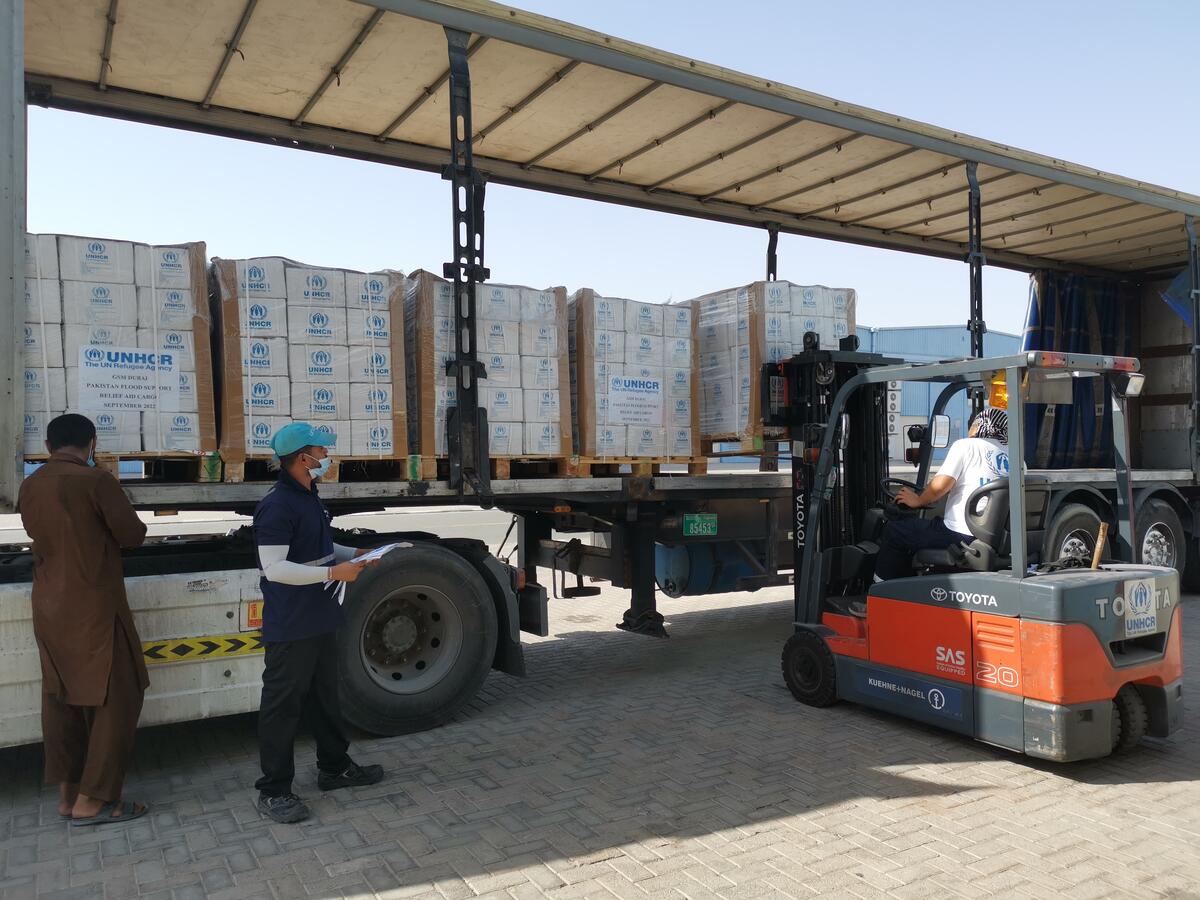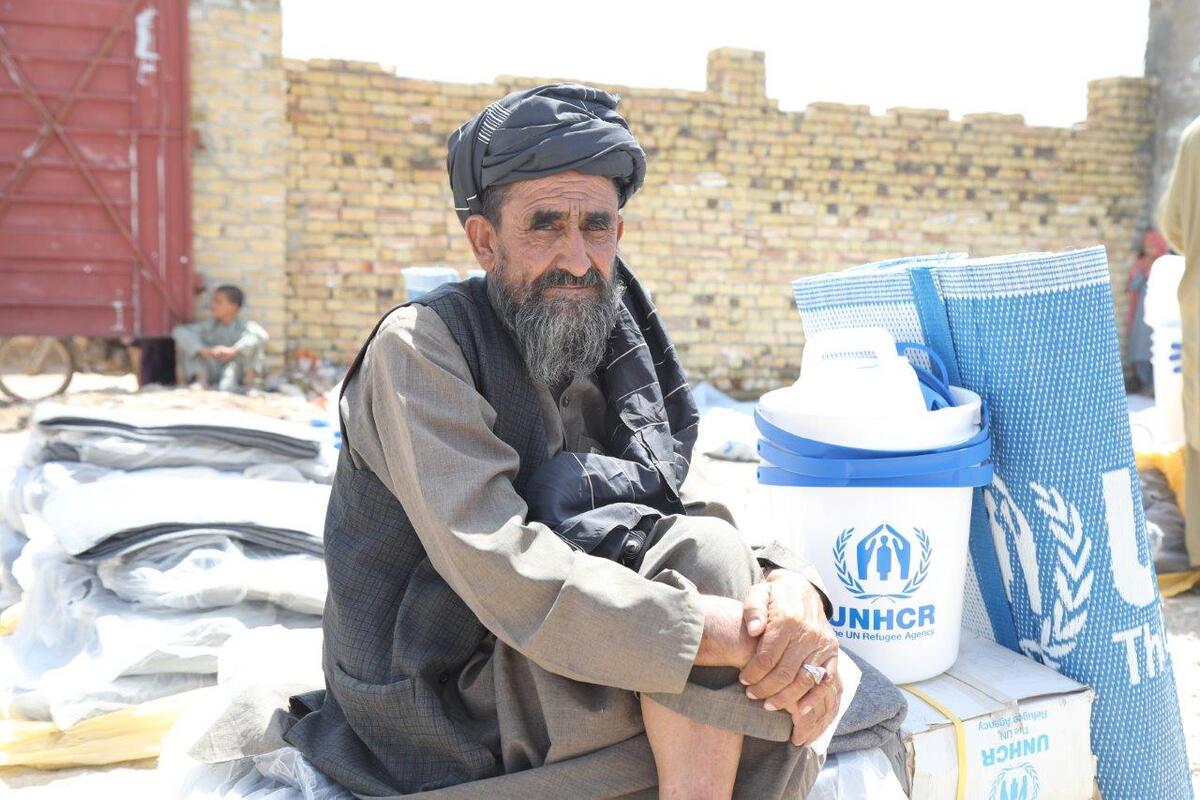Typhoon Haiyan: UNHCR rushes aid from tarmac to town
Typhoon Haiyan: UNHCR rushes aid from tarmac to town

TACLOBAN CITY, Philippines, November 20 (UNHCR) - The aid was barely dry when it flew off the trucks. UNHCR's plastic sheets and blankets had just been offloaded in the rain from a cargo plane at the Tacloban airport and were immediately taken to San Jose, a nearby municipality flattened by Typhoon Haiyan.
The centre of the November 8 storm passed almost directly over Barangay 88 in San Jose, toppling trees and reducing homes to rubble in this 11,000-strong community.
Emilita Montalban, the neighbourhood's top elected official, huddled with her family in a hotel room for more than two hours, moving from room to room as the windows shattered and sheets of water gushed in. When the storm passed and she was able to go outside, "Tacloban was just like a ghost city," she said. She estimates that 1,000 people died and 1,500 houses were destroyed in her area.
Within days Emilita was back in action, organizing relief distribution in Barangay 88 with UNHCR and its implementing partner, Community and Family Services International (CFSI), earlier this week.
People with specific concerns, including women and female-headed families in a separate queue, were prioritized to receive the plastic sheets and fleece blankets. Supplies were also distributed to some families living in evacuation centres whose homes had been completely destroyed in the barangay (district)..
A total of 1,150 plastic sheets and 120 fleece blankets were handed out to affected families in Barangay 88. Recipients said that they would use the plastic sheets to replace their destroyed roofs while waiting for the debris to be cleared and the rebuilding of the city to begin in earnest.
On Tuesday, UNHCR distributed an additional 815 plastic sheets in the neighbouring Barangay 93. The agency's warehouse in Tacloban is currently empty and awaiting replenishment by air and sea.
"Every day that relief supplies sit in the warehouse, means that the women, men and children spend another night without essential items that can help them through this difficult period and keep them safe," said Roberto Mignone, a senior UNHCR protection official in Tacloban. "This is why we distributed the items directly from the airport to one of the worse-hit communities."
At Barangay 88, Emilita told her council men and women that neither herself nor any of them would receive these items because their homes were not as badly damaged as those of others. She estimated that 30 per cent of her community had left for other areas of Samar province, to Cebu or to Manila.
"Those who can afford to leave are leaving, but the indigent are forced to remain," she explained.
Many Barangay 88 residents said they wanted to stay in Tacloban. One woman said she had been in Bohol distributing aid to earthquake victims when the typhoon hit. She returned immediately to Tacloban, eager to check on her family and begin the process of rebuilding. Asked whether she would consider moving elsewhere, she was firm: "No, Tacloban is my home. I will not leave again."
UNHCR's Mignone noted, "In these moments, you really see the resiliency and the sense of community here in Barangay 88. Everyone is determined to contribute and to support their neighbours as the recovery effort moves forward."
By Angela Moore in Tacloban City, Philippines


